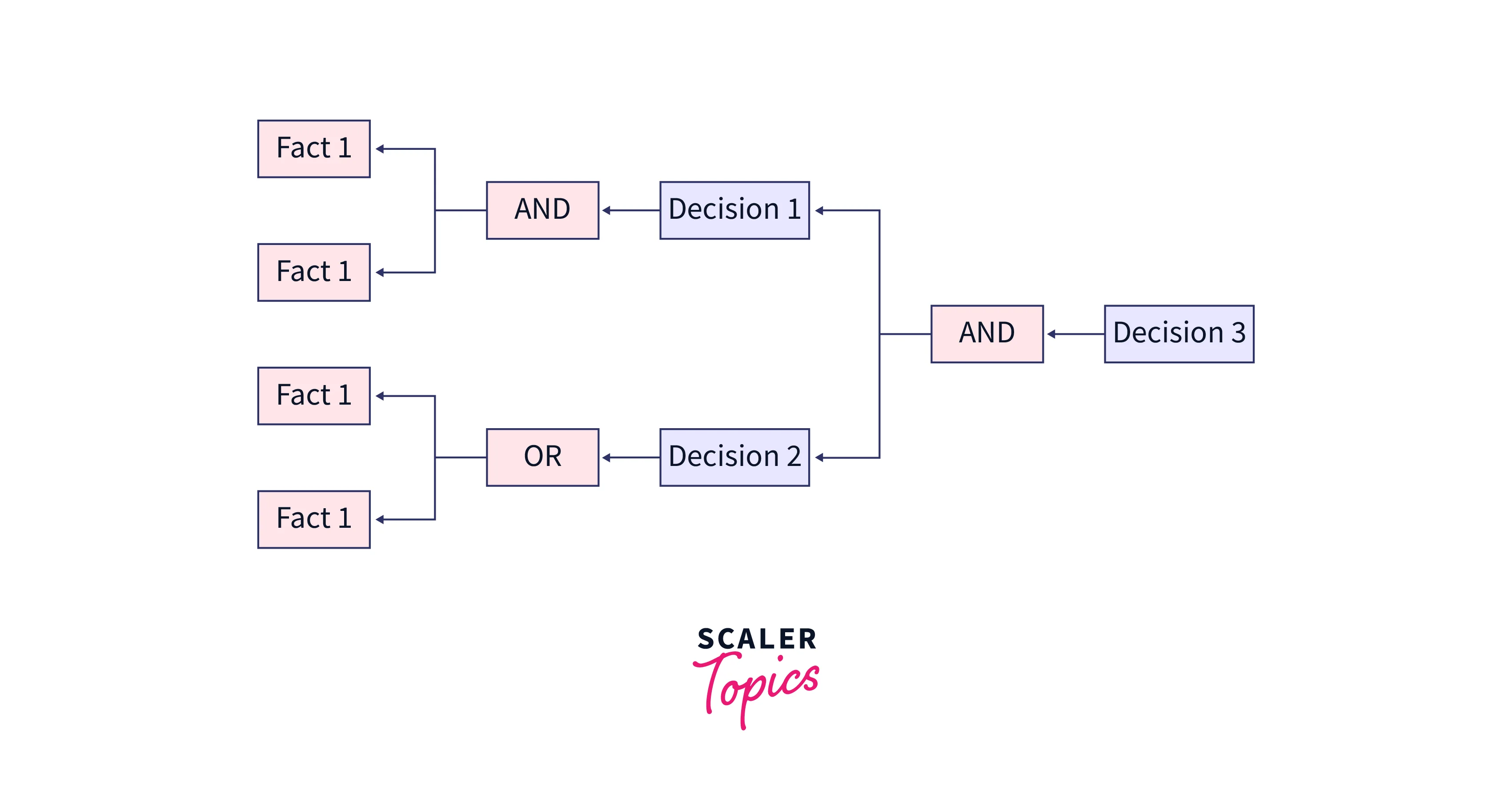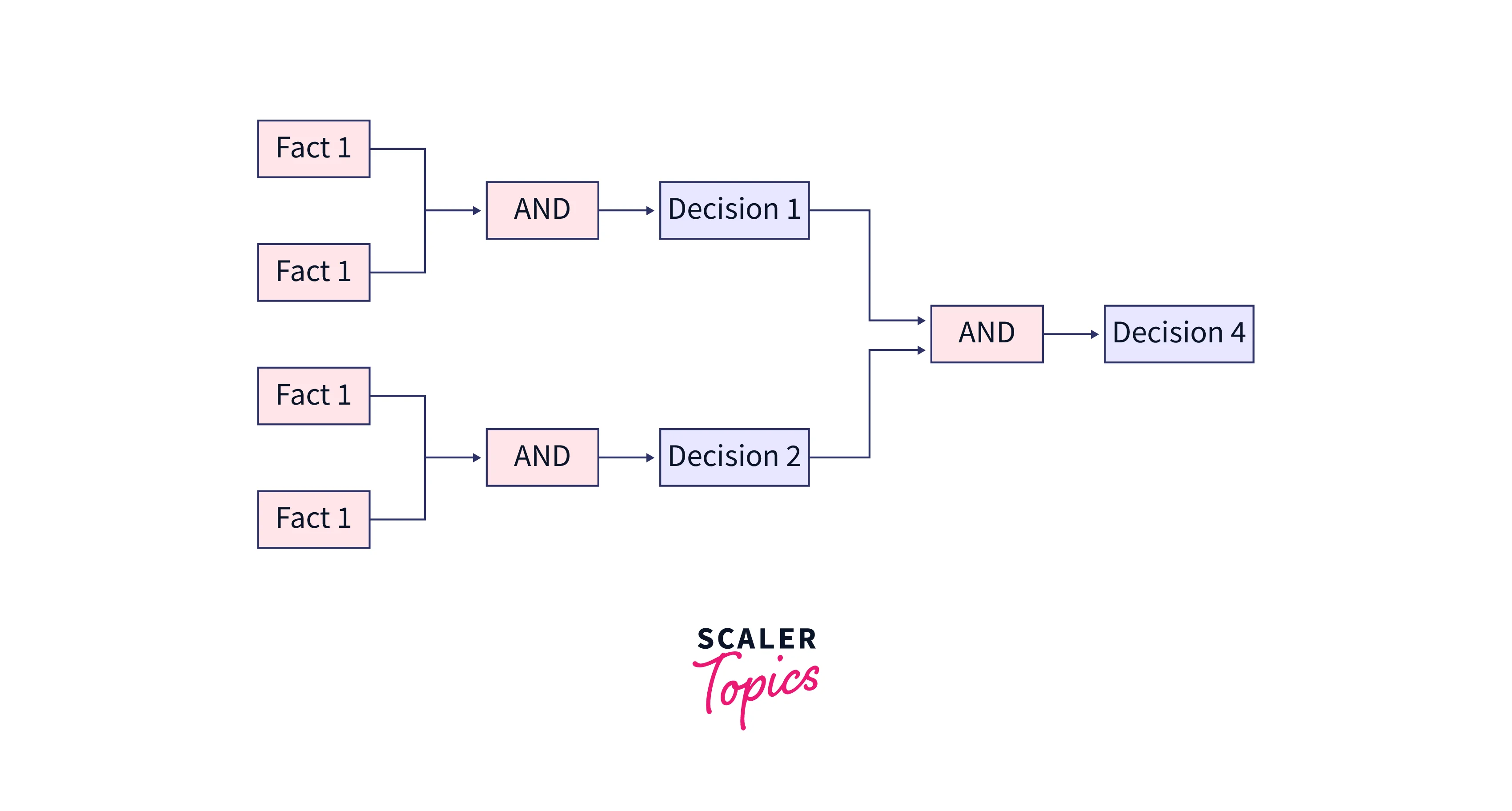Backward Chaining vs Forward Chaining
Overview
The demand for expert systems has been on the rise, with an increasing number of people seeking systems that can deliver fast and accurate solutions. Artificial intelligence (AI) has made it possible to meet this demand through the use of various technologies that facilitate different AI tasks, including planning, classification, reasoning, and more.
Backward and forward chaining are two of the most commonly used techniques in artificial intelligence and computer science. These techniques help to solve problems by breaking them down into smaller pieces and solving them one by one. In this article, we will explore the difference between forward chaining and backward chaining.
Introduction
In Artificial Intelligence (AI) and Knowledge Representation (KR) systems, the reasoning is used to make inferences and reach conclusions. Two common methods used in reasoning are Backward Chaining and Forward Chaining. These methods are used to solve a variety of problems such as decision-making, expert systems, and rule-based systems. However, they differ in the way they process information.
In this discussion, we will explore the difference between Forward Chaining and Backward Chaining, their advantages, and their applications in AI and KR systems. By understanding these methods, we can determine which method is more suitable for a particular problem and optimize our system's performance.
Backward Chaining

Backward chaining is a problem-solving technique that starts with a goal and works backward to find a solution. It is also known as goal-driven reasoning. The algorithm starts by examining the goal and determining what needs to be true in order for the goal to be achieved. Then it works backward, examining each premise and rule in turn, until it finds a rule that can be applied to the current set of facts. This process continues until the original goal is reached.
To understand this process, consider the example of a medical diagnosis system. The goal is to diagnose a patient with a specific disease. The algorithm starts by looking for symptoms that are associated with the disease. Then it works backward, examining each symptom and rule in turn, until it finds a rule that can be applied to the current set of symptoms. This process continues until a diagnosis is reached.
Forward Chaining

Forward chaining is a problem-solving technique that starts with a set of facts and works forward to find a conclusion. It is also known as data-driven reasoning. The algorithm starts by examining each fact in turn and applying the relevant rules. If a rule matches the current set of facts, it is applied to generate new facts. This process continues until a conclusion is reached.
To understand this process, consider the example of a fire alarm system. The system starts by examining the sensors to see if there is any smoke or fire. If there is, it applies the rules to determine the location of the fire and trigger the alarms. If there is no smoke or fire, the system does nothing.
Backward Chaining vs Forward Chaining
The following is the difference between Forward Chaining and Backward Chaining:
- The main difference between backward and forward chaining is the direction of reasoning. In backward chaining, the algorithm starts with a goal and works backward to find the solution, while in forward chaining, the algorithm starts with facts and works forward to find a conclusion.
- Backward chaining is referred regarded as a top-down strategy, and forward chaining is regarded as the down-up strategy.
- Backward chaining employs a depth-first search approach whereas forward chaining employs a breadth-first search method.
- Another significant difference between these two techniques is the type of problem they are suited for. Backward chaining is best suited for diagnostic, prescriptive, and debugging applications, that require a specific goal or objective to be achieved. On the other hand, forward chaining is better suited for applications such as planning, monitoring, control, and interpretation that involve data-driven decision-making.
| Backward Chaining | Forward Chaining | |
|---|---|---|
| Reasoning direction | Backward | Forward |
| Starting point | Goal | Facts |
| Search strategy | Depth-first | Breadth-first |
| Suited for | Goal-driven | Data-driven |
| Example | Medical diagnosis | Fire alarm system |
Conclusion
- Backward and forward chaining are useful problem-solving techniques in artificial intelligence and computer science.
- Backward chaining starts with a goal and works backward to find a solution. It starts by examining the goal and determining what needs to be true in order for the goal to be achieved.
- Forward chaining starts with a set of facts and works forward to find a conclusion. It starts by examining each fact in turn and applying the relevant rules.
- They differ in the direction of reasoning and the type of problems they are suited for. Backward chaining is best suited for goal-driven problems, while forward chaining is better suited for data-driven problems.
- Understanding the differences between these techniques can help in choosing the most appropriate technique for a given problem.
